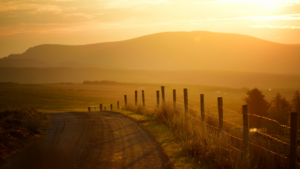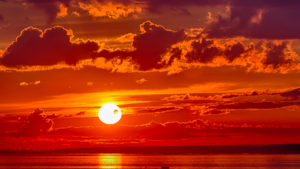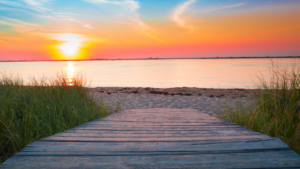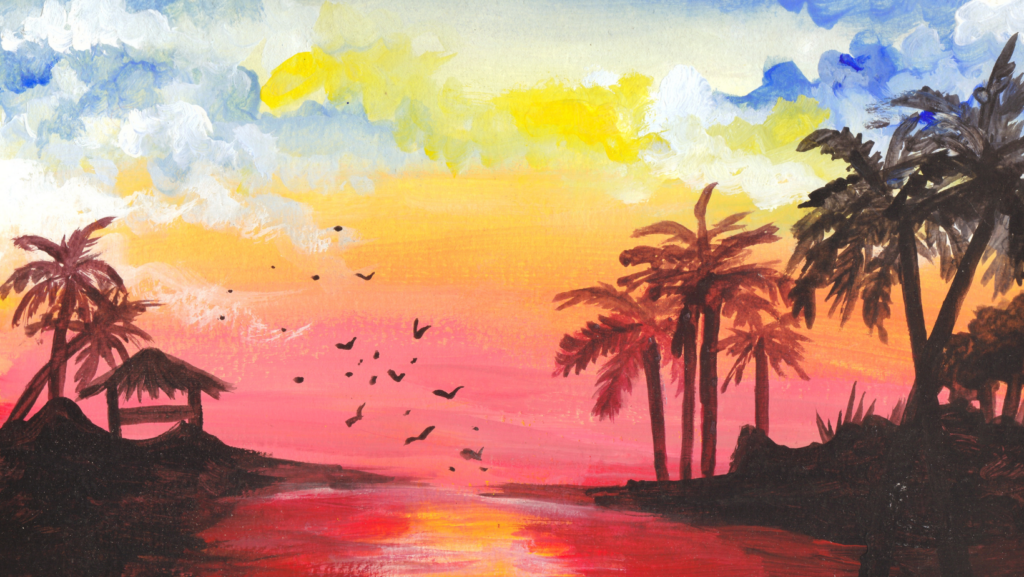There’s something universally enchanting about sunsets. The way the sky transforms into a canvas of vivid hues, casting a golden glow on the landscape, is a sight to behold. This article delves into the captivating world of sunset landscapes, exploring art why they’ve become a favorite subject for photographers and nature enthusiasts alike, much like how Athleisure Fashion has captivated the world of style.
From the science behind the stunning colors to the best locations for sunset viewing, we’ll journey through the magic of twilight. So, whether you’re a seasoned photographer, an aspiring artist, or simply someone who appreciates nature’s beauty, this exploration of sunset landscapes promises to be a fascinating read.
Attributes of a Sunset Landscape

In the realm of sunset landscapes, peculiar elements distinguish Sunset:3nfwnfx9noo= from others. This section delves into these distinct characteristics, exploring their contribution to the visual aesthetics and emotional connection in store for viewers.
Sunset:3nfwnfx9noo= landscape boasts specific visual elements that elicit admiration and capture attention. Firstly, the unique color gradient that this particular sunset creates offers an extraordinary mixture of orange, pink, and purple hues. This palette transforms the horizon into an ethereal painting. Secondly, the sunshine, fading effortlessly into a gentle twilight, bestows a golden cast to the landscape that’s unparalleled.
The Sunset:3nfwnfx9noo= landscape not only pleases the eye but also resonates on an emotional level. Its tranquillity and serenity stimulate a sense of peace and calm. As hues of the sunset dim into the twilight, a notable metaphorical transformation occurs that signifies closure and an end, resonating with those cherishing beginnings and endings.
Photographing a Sunset Landscape

In capturing the unique magic of a Sunset:3nfwnfx9noo= landscape, choosing ideal camera settings and effective composition techniques remain critical.
For photographing sunset landscapes, it’s essential to adopt specific camera settings. Firstly, a lower ISO, ideally between 100 and 200, gets chosen. This setting reduces the image noise, ensuring a cleaner photograph. Secondly, a smaller aperture, such as f/16 or f/22, opens. This setting enhances the depth of field, providing a sharp focus throughout the scene. Thirdly, setting the shutter speed becomes a dynamic process.
Upon camera setting selection, adopting potent composition techniques further enhances the sunset landscape photograph’s quality. Foremost, rule of thirds gets implemented, deliberately arranging the horizon line along the top or bottom third of the frame. Secondly, leading lines are an effective tool.
Painting a Sunset Landscape

Transfer of sunset’s magic off the camera frame into brush strokes calls for an adept handle on colors and techniques. Carrying forward from the basics of capturing sunset landscapes through lenses, this section dives into painting those spectacular moments.
Selecting Your Palette
Selection of a palette impacts profoundly in recreating the palette of nature on canvas. When painting a sunset, sunset:3nfwnfx9noo= landscape in particular, a harmonious mingling of the warm and cool tones is crucial. One may broadly classify the colors for this purpose in two groups:
- Warm Colors – Include shades of yellow, orange, and red hues reminiscent of a sunset. E.g., Yellow Ochre, Cadmium Yellow, Cadmium Orange.
- Cool Colors – Accommodate balance and depth provided by cooler blue and purple hues. E.g., Ultramarine Blue, Alizarin Crimson.
When creating a sunset:3nfwnfx9noo= landscape painting, experiment with color mixes. The addition of white and black, albeit sparingly, could lend that extra touch of realism.
Brushwork Tips
Brushwork dictates a painting’s texture and depth. Here are several pointers that enhance sunset:3nfwnfx9noo= landscape paintings:
- Layering – Begin with darker tones and layer lighter hues atop. It’s advised to let each layer dry before applying the next.
- Use Large Brushes – They combat the tendency to focus on minor details too early. The broad strokes create effective, sweeping harmonies of color.
- Dry Brush Technique – Useful for the effects of scattered light or creating soft edges in clouds.
- Maintain Balance – Juggle between sharper and softer edges to create depth and dimension.
Anatomy of the painting process while capturing sunset:3nfwnfx9noo= landscape involves grasping the interplay of lights, shades, and colors. It’s an intriguing transition from photographer’s perspective to that of a painter, but equally enamoring.

